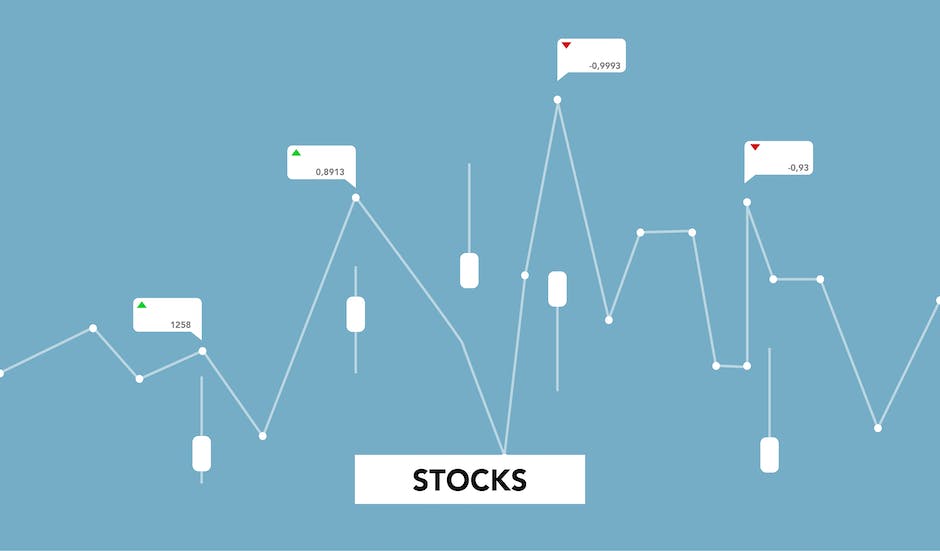Embarking on the journey of stock trading can be both exciting and daunting, as it offers the potential for significant financial gains while presenting unique challenges. To make informed decisions and minimize financial risks, it is crucial for beginners to thoroughly understand the fundamentals of stock trading. In this guide, we will provide a comprehensive overview of the various stock trading platforms available, along with the essential analytical tools and strategies needed for consistent success in the market.
Introduction to Stock Trading
Investing in the stock market can be an excellent way to grow your wealth over time, and it all starts by understanding the basics of how stocks work and how the market operates. A stock represents a share of ownership in a company, and the stock market is a place where individuals and institutions can buy and sell those shares. When you own a share of stock, you essentially own a small portion of the company, which allows you to benefit from the company’s growth and earnings. As a beginner, it’s essential to get familiar with the market mechanisms and the various stock trading platforms available to help you make informed decisions on your investments.
Trading platforms play a crucial role in the buying and selling of stocks, as they provide the tools and resources necessary for investors to execute trades and manage their investments efficiently. There are different types of stock trading platforms, each catering to a specific group of investors. For beginners, some platforms are specifically designed with user-friendly interfaces and a wealth of educational resources to help novice traders learn the ropes. These beginner-friendly platforms often offer commission-free trades, which can be an attractive feature for those just starting their investing journey.
In addition to beginner-focused platforms, there are also advanced platforms aimed at more experienced traders. These platforms tend to offer sophisticated charting tools, customizable trading platforms, and advanced order types, giving seasoned investors the flexibility to execute complex strategies. Regardless of your experience level, it’s essential to choose a trading platform that aligns with your specific needs and goals as an investor.
Stock market participants are made up of a diverse group of individuals and institutions, including retail investors, institutional investors, market makers, and brokerage firms. Retail investors are everyday individuals who invest in stocks, often using online brokerages or stock trading platforms for their transactions. Institutional investors, such as mutual funds, pension funds, and hedge funds, manage large sums of money and have a significant impact on the stock market due to the vast amounts of capital they invest. Market makers are responsible for facilitating the buying and selling of stocks by continuously offering to buy or sell shares at a specific price, maintaining market liquidity. Brokerage firms are intermediaries that provide services, such as trading platforms and research, to investors in return for commissions or fees.
As a beginner in the world of stock investing, it’s crucial for you to understand the basic concepts of stocks, the market, and the various trading platforms. To ensure your chosen platform aligns with your goals and levels of experience, you should carefully consider your needs and potential growth as an investor. With this essential knowledge, you’ll be well-prepared to navigate the stock market and work toward building a diverse and successful investment portfolio.

Types of Stock Trading Platforms
During your journey in stock trading, you’ll come across different types of platforms to help you move through the market. One such option is a full-service brokerage, which is usually perfect for beginners that desire more hands-on guidance. Full-service brokerages often employ financial consultants who are readily available to offer investment advice, management services, and research reports. However, these personalized services generally come with higher fees, so it’s important to carefully weigh the benefits against the costs as you explore the world of stock trading platforms for beginners.
On the other end of the spectrum are discount brokers, who provide a more cost-effective alternative for those looking for a DIY approach. These platforms usually offer lower fees and commissions on trades, but less personalized support and guidance. One of the advantages of using discount brokers is access to an array of tools and resources for research, analysis, and decision-making. This type of platform may be more suitable for investors with some basic understanding of the market and a desire to be more hands-on in managing their own portfolios.
For active traders or those with a more advanced knowledge of the stock market, direct-market access (DMA) platforms may be the best choice. These systems provide a direct connection to the exchange, offering faster trade executions, lower spreads, and greater control over the trading process. DMA platforms typically come with specialized trading tools, technical analysis capabilities, and sophisticated charting, catering to the needs of experienced traders. However, they can also carry higher costs and may require a higher initial deposit and minimum account balances, making them less accessible for beginners or those with limited capital.
Another option for beginners or those less-interested in day-to-day trading activities are robo-advisors. These platforms use algorithms and pre-set investment strategies based on your risk tolerance and financial goals to automate the investment process. This hands-off approach often comes with lower fees and minimum account balance requirements, making it an attractive option for those who prefer a more passive investment strategy. However, the downside is that robo-advisors often lack the personal touch and adaptability of a human advisor, and their pre-set algorithms may not always cater to every investor’s unique situation.
In conclusion, choosing the right stock trading platform depends on your personal needs, investment goals, and level of experience in trading. From full-service brokerages providing hands-on guidance, to discount brokers offering flexibility and lower costs, direct-market access platforms catering to experienced traders, and robo-advisors providing a more passive investment approach – understanding the pros and cons of each type of platform will ensure a smoother and more effective stock trading experience for any investor, regardless of their level of expertise.

Fundamental Analysis
As a beginner delving into the world of stock trading platforms, one essential concept that must be grasped in order to make informed investment decisions is fundamental analysis. This method entails examining a company’s financial statements and health, the competitive landscape, and the overall market condition to determine the intrinsic value of its stock. Gaining a solid comprehension of the company’s true worth allows investors to make knowledgeable decisions on whether to buy, hold, or sell their shares, potentially yielding more profitable investments.
Financial statements play a crucial role in fundamental analysis and provide a window into the company’s financial health. These statements usually comprise the balance sheet, income statement, and cash flow statement. For beginners utilizing stock trading platforms, learning to read and analyze financial statements could prove invaluable. The balance sheet outlines the company’s assets, liabilities, and shareholder equity. The income statement reflects its revenue and expenses over a specific period, and the cash flow statement captures the company’s inflows and outflows of cash. These statements offer insights into the company’s profitability, liquidity, solvency, and overall financial effectiveness.
Valuation ratios are another critical aspect of fundamental analysis, as they enable investors to compare different companies within the same industry or sector. Key valuation ratios include the price-to-earnings (P/E) ratio, price-to-sales (P/S) ratio, and price-to-book (P/B) ratio. By comparing these ratios, investors can determine if a stock is overvalued or undervalued, thereby allowing them to make more strategic investment decisions through their stock trading platforms.
Evaluating the financial health of a company is crucial to making informed decisions regarding stock purchases or sales. Indicators of financial health include revenue and profit growth, debt levels, cash flow, and return on equity, among other factors. For beginners participating in stock trading platforms, understanding these indicators and how they impact the company’s overall stability can result in better long-term investment performance. The ability to discern a company’s financial health can lead to more accurate predictions of its stock price movement, helping investors avoid potential pitfalls.
Investors who master fundamental analysis and incorporate the knowledge they’ve gained into their stock trading experiences have a better chance of finding hidden gems among stocks and gaining an advantage over others who overlook such crucial factors. By understanding a company’s financial health and performance, beginners can become more confident in their choices and develop a more sophisticated and profitable investment strategy.

Photo by austindistel on Unsplash
Technical Analysis
Moving on to another essential skill for beginners, technical analysis is a critical aspect to understand in stock trading platforms. Technical analysis refers to the evaluation of stocks or the overall market by analyzing historical price patterns, trends, and other trading data. This method assumes that market patterns tend to repeat themselves and can be used to identify potential trading opportunities and make informed decisions about when to enter or exit a position.
While fundamental analysis focuses on assessing a company’s financial well-being, technical analysis primarily revolves around studying price and volume data to predict future price movements, making it a valuable addition to the beginner’s toolkit.
Chart Patterns
One essential element of technical analysis is the interpretation of chart patterns. Chart patterns are formations that occur in the price movement of a stock, showing the psychological factors at play in the market. Some common patterns include triangles, double tops and bottoms, and head and shoulders. These patterns can indicate whether a stock’s price is likely to continue in its current direction or reverse course. By familiarizing themselves with these patterns, beginner traders can gain insights into market trends and make better-informed trades on their chosen platform.
Technical Indicators
Another crucial aspect of technical analysis is the use of technical indicators. These indicators are mathematical calculations based on price, volume, or other market data that help traders identify trends, momentum, and potential reversals. Some popular indicators among beginners include moving averages, relative strength index (RSI), and the moving average convergence divergence (MACD). Integrating these indicators into a trading strategy can help beginners better understand the market’s behavior and make more informed decisions.
Tools for Technical Analysis
Various analytical tools are available to assist beginners in mastering technical analysis. Many stock trading platforms, specifically designed for beginners, offer built-in tools that simplify the process of applying technical analysis to a user’s trades. For instance, some platforms allow users to easily overlay technical indicators onto stock charts, automating calculations and providing visual representations of data. By utilizing these tools, beginners can focus on learning the principles of technical analysis and apply these concepts to real-world trading scenarios.
Advanced Techniques and Future Success
As traders develop their skills in technical analysis, they can explore more advanced techniques, such as candlestick charting, point and figure charting, and Elliott Wave Theory. Each of these approaches offers different perspectives on market data, allowing traders to create more comprehensive trading strategies. Continuously expanding their knowledge of technical analysis can boost beginner traders’ chances of success on any stock trading platform they choose. A strong foundation in technical analysis will serve as a valuable asset in navigating the complex world of stock trading.

Trading Strategies
Value investing is a popular strategy for beginners, as it involves identifying undervalued stocks and purchasing them with the expectation that their prices will eventually rise. This approach requires extensive research and comprehension of a company’s financial metrics to determine its intrinsic value. Beginners can use stock trading platforms to access essential financial data and analytical tools. It’s important to remember that value investing typically focuses on long-term gains and requires patience to see significant returns.
Growth investing is another popular trading strategy, especially for beginners. This approach focuses on investing in companies with high potential for growth and expansion, typically within the technology or innovative sectors. Growth investing can lead to substantial profits, but it also carries a higher risk due to the volatility of these stocks. Beginners can use stock trading platforms that cater to growth investing by offering robust charts, analysis tools, and research on high-growth companies. Monitoring the performance of growth stocks is important to adjust your position or exit when growth slows down.
Momentum trading is a strategy that involves buying stocks with strong recent performance and selling those with weak performance. This approach is based on the belief that price trends are likely to continue for some time, allowing for potentially quick returns. Beginners can utilize stock trading platforms that offer momentum indicators and tools, such as moving averages and RSI, to help identify appropriate entry and exit points. While momentum trading can provide rapid gains, it also involves the risk of sudden price reversals, requiring regular monitoring of the market and disciplined risk management.
Day trading is a short-term trading strategy where positions are opened and closed within the same trading day. This approach can offer quick gains by taking advantage of small price fluctuations throughout the trading session. Beginner day traders can benefit from stock trading platforms offering fast and reliable execution, real-time quotes, and customizable charting tools to help make quick decisions. It’s worth noting that day trading can be highly risky due to the concentrated focus on short-term price movements and the need for excellent risk management skills to avoid significant losses.
Swing trading is another strategy suited for beginners, focusing on capturing gains by holding positions for a few days to weeks. This approach relies on technical analysis and chart patterns to predict price swings and identify suitable entry and exit points. Stock trading platforms geared towards swing trading provide advanced charting tools and access to trading communities to help beginners gain market insights and develop their skills. While swing trading has the potential to generate consistent returns, it is essential to manage risk through position sizing and stop losses to prevent major setbacks.
Risk management is a critical element of every trading strategy, especially for beginners who are venturing into the stock market. To be successful, it is essential for beginners to choose a strategy that aligns with their goals, time commitment, and risk tolerance. There are stock trading platforms for beginners that offer educational resources and tools, making it easier for them to learn and apply effective risk management in their trades.

Risk Management
Establishing a strong foundation in risk management techniques is crucial for anyone new to trading stocks. This enables traders to protect their capital from significant losses when engaging in various trading platforms. With the right knowledge and understanding, beginners can confidently navigate the stock market while minimizing risks and increasing the likelihood of success.
Among risk management essentials, portfolio diversification is a fundamental technique that allows traders to spread their investments across multiple assets, lessening the impact of a single asset’s poor performance on the overall portfolio.
Position sizing, another essential element of effective risk management, involves determining the optimal number of shares or units to trade based on an individual’s risk tolerance and financial capacity. By allocating appropriate position sizes, beginner stock traders can ensure that their trading exposure remains within their comfort levels and avoids large potential losses. Many stock trading platforms offer tools and calculators to assist in determining the ideal position sizes for each trade.
Stop-loss and take-profit orders play a significant role in managing risks while trading on stock platforms. Novice traders should familiarize themselves with setting these orders, which automatically close open positions when a specified price is reached. Stop-loss orders help prevent excessive losses if a trade goes against the trader’s initial expectations, while take-profit orders allow traders to lock in gains when their profit targets are achieved. Most stock trading platforms for beginners offer a user-friendly interface for setting these essential orders.
Maintaining a trading journal is another crucial component of risk management in stock trading for beginners. A trading journal serves as a valuable record of a trader’s progress, strategies, and decision-making processes. By regularly reviewing and analyzing past trades, traders can identify areas for improvement, refine their risk management techniques, and continuously optimize their performance. Various stock trading platforms offer integrated journaling tools or the ability to import trade data into external journaling software.
Understanding the psychological aspects of trading is crucial for beginners, as it can greatly influence their approach to risk management. Emotional and psychological factors can lead new traders to take unnecessary risks or make impulsive decisions when using stock platforms. To be successful, it’s important to stay aware of the role emotions can play in the trading process and maintain self-discipline to consistently follow pre-determined risk management strategies. Combining solid risk management principles with the features and resources provided by reputable stock trading platforms will help beginners confidently protect and grow their investments.

Photo by fairfilter on Unsplash
Getting Started
One of the initial steps in using stock trading platforms for beginners is opening an account with a suitable brokerage firm. These platforms offer a variety of account types, such as individual, joint, or retirement accounts, and you may need to provide personal details like your name, social security number, and income information during the opening process. It’s important to research and compare different platforms, as they can offer varying fees, tools, and services tailored for newcomers. Once you find the right account for your needs, you’ll typically submit an online application, wait for approval, and sign any necessary paperwork to complete the setup.
Understanding the tax implications of stock trading for beginners is essential because this knowledge can influence your trading decisions. In general, stock trades are taxed as either short-term or long-term capital gains, depending on the duration of your holding period. Short-term capital gains (selling a stock held for less than a year) are typically taxed at higher rates than long-term gains (selling a stock held for more than a year). Additionally, some investment accounts, such as Individual Retirement Accounts (IRAs), may offer tax advantages to help save on taxes while trading. Remember to keep clear records and consult a tax advisor if needed for assistance with your unique situation.Before you can begin trading, you will need to fund your account by transferring money from a bank or another brokerage account. Typically, stock trading platforms offer several methods for funding your account, including electronic funds transfer, wire transfer, and check deposit. Depending on your brokerage, there may be fees or limitations on deposit amounts and processing times. You should also familiarize yourself with any withdrawal procedures and restrictions when deciding how much money to invest initially, as having funds tied up in investments may impact your liquidity in case of emergency needs.As a new trader, it’s essential to familiarize yourself with regulatory requirements. In the United States, the Securities and Exchange Commission (SEC) and Financial Industry Regulatory Authority (FINRA) regulate the stock market and its participants. These authorities work to protect investors and ensure fair markets by implementing rules and regulations that you need to follow while trading. While beginners may not need an in-depth understanding of all regulatory requirements, it’s crucial to grasp concepts related to disclosure, margin accounts, pattern day trading, and more. Learning about these restrictions will not only help you comply with regulations but reduce potential risks in your trading journey.Understanding various order types when buying or selling shares of stock is essential for beginners engaging in stock trading platforms. By becoming familiar with market orders, limit orders, and stop orders, beginners can effectively navigate these platforms and make informed decisions based on market conditions and personal preferences. Gaining this knowledge is crucial to starting a successful trading journey, reducing unnecessary risks, and ensuring a smoother experience in the long run.

Photo by austindistel on Unsplash
Continuing Education
In order to achieve long-term success in the ever-changing world of finance, it is important for beginners to continuously learn and stay up-to-date on stock trading methods and strategies. Utilizing various learning resources, such as books, podcasts, blogs, and online courses catered to beginners can greatly contribute to this effort. Websites like Investopedia, Coursera, and Khan Academy offer invaluable knowledge about stock trading basics, strategies, and risk management, helping beginners stay ahead of the curve and develop the skills needed for a successful trading experience.
Another crucial resource for beginner traders is staying up-to-date on the current news and events in the world of finance. Major financial news outlets like CNBC, Bloomberg, and the Wall Street Journal are excellent places to start. By regularly following these sources, you will not only get a good understanding of the companies and industries you are interested in but also have a better grasp of the general economic environment. Keeping a close eye on the news allows you to make more informed decisions about your stock trades and better manage your investment portfolio.
Subscribing to newsletters and setting up customized notifications from your preferred stock trading platform or mobile app can also be beneficial. Many trading platforms have in-app newsfeeds, market summaries, and analyst reports that can provide you with insights and evaluations of specific stocks. These features will help you stay informed about events and trends directly related to your investments and potential stock picks. In addition, using stock screeners with customizable filters can be a powerful tool for discovering new trading opportunities based on your specific criteria.
Online forums and social media groups dedicated to stock trading can be another excellent resource for traders seeking to expand their knowledge. Websites such as Reddit, StockTwits, and various Facebook and Discord groups provide platforms for traders of all skill levels to discuss the latest news, market trends, and trading strategies. As a beginner, engaging with more experienced traders can give you valuable insights into your own trading strategies and how to better manage your investments. However, it’s essential to be cautious and conduct thorough due diligence on any tips or advice you find on these platforms, as not all information posted may be accurate or reliable.
In addition to consuming a wide range of resources, continuous learning and improvement require keeping track of your own trading experiences. One way to do this is by maintaining a trading journal that records the details of your transactions, including the reasoning behind your decisions and the outcomes of your trades. Reflecting upon these records can provide valuable insights into patterns or mistakes in your trading habits, allowing you to make more informed decisions and ultimately become a more successful trader over time. Remember that the road to success in stock trading is paved with constant education and self-improvement – don’t be afraid to seek out diverse knowledge and resources to stay ahead of the game.

Overall, developing a strong foundation in stock trading is achievable through a combination of knowledge acquisition, practical application, and a commitment to continued learning. By familiarizing oneself with diverse trading platforms and mastering various analytical tools, beginners can build a robust skill set that increases the likelihood of successful trading endeavors. Armed with the information provided in this guide, individuals seeking to enter the world of stock trading should be better equipped to navigate the complexities of the market and make informed decisions for their financial future.

